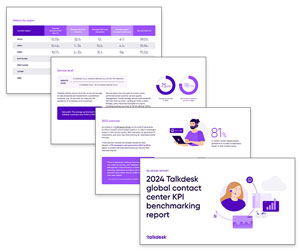We picked up this question from our LinkedIn group:
“Are there any metrics for training agents?
So we asked the question of our readers. Here are all the answers that you need to know…
-
There Are Metrics for Everything
There are metrics for everything, and when training you should be looking at a number of different elements of the training/education.
Firstly, I would measure the effort made by the trainer, and there are a number of factors to measure on that side.
Then there is the agent’s side. Once again, there are many metrics to measure, from listening skills, to absorption and retention of information, attitude/behavioural and also, very importantly, do they understand the information.
Thanks to Marianne
-
Training Metrics From Two Vantage Points
At a high level, I think of training metrics from two vantage points:
- Those that measure the effectiveness/impact of the trainer
- Those that show the learners’ understanding and ability to demonstrate the skills and knowledge that the training was designed to instil.
Additionally, I break metrics down into two categories:
Those that predict success & Those that reflect success.
Depending on what I’m going to do with the information, things I might measure for the learner include:
-
- Time to proficiency (how long until the learner demonstrates the skill consistently)
- Knowledge decay/retention (how well do learners recall/effectively demonstrate information or a skill and at what point is refresher training required?)
- Level of proficiency (for skills that measure how well something is done, not if it was/was not), etc.
If they’re new hires, I would likely continue to affirm attributes that were initially vetted during the hiring process like culture and job fit, work ethic, general behaviour, foundational/expected skill proficiency, etc.
Thanks to Justin
-
Training Should Be Continuous and Targeted
In a way, training is to operations as advertising is to marketing.
Half of it works, and half of it doesn’t – the difficulty is knowing in advance which half and why.
There are ways of measuring training effectiveness.
- Always ensure all trainees complete an anonymous survey immediately on completing training – this tells you something about the quality of the training materials, the training content, and the training environment
- Follow up with bite-sized refreshers within a month of training taking place and include mini-tests in the form of quizzes to test retained knowledge
- Directly tie training outcomes to business metrics that you routinely measure. For example, you might do some sales enablement training. If so, do your agents have higher sales conversion following training?
Finally, it’s worth mentioning that training should not be a one-off or even a series of disconnected training events. Training should be continuous and targeted. In this way, you more easily measure its impact and prove its ROI.
Thanks to Chris
-
Define Expected KPI Values
Why not define expected KPI values for successful agents and look at how many and which ones hit the targets?
Thanks to Liam
-
There Are Two
Yes there are two: new agent training hours and annual agent training hours
Thanks to Aoron
-
AHT Variance
A lot depends on what you want to measure and why, but my sneaky favourite is AHT variance between trained or veteran agents and untrained agents.
Thanks to Arifin
Other articles on Training Metrics
- 5 Important Call Centre Metrics to Improve Agent Performance
- How to Use Inbound Call Centre Metrics to Drive Performance
Author: Rachael Trickey
Published On: 7th Oct 2022 - Last modified: 11th Feb 2025
Read more about - Call Centre Questions, Agent Performance, Key Performance Indicators (KPIs), Metrics, Training







































